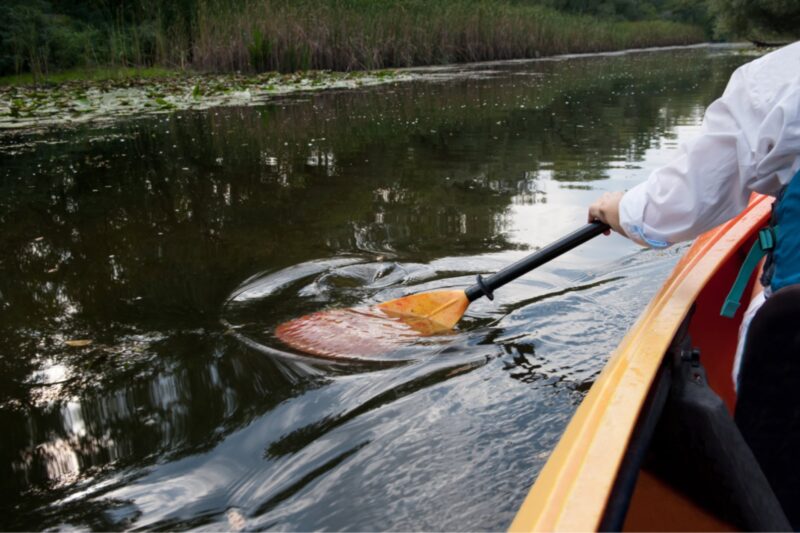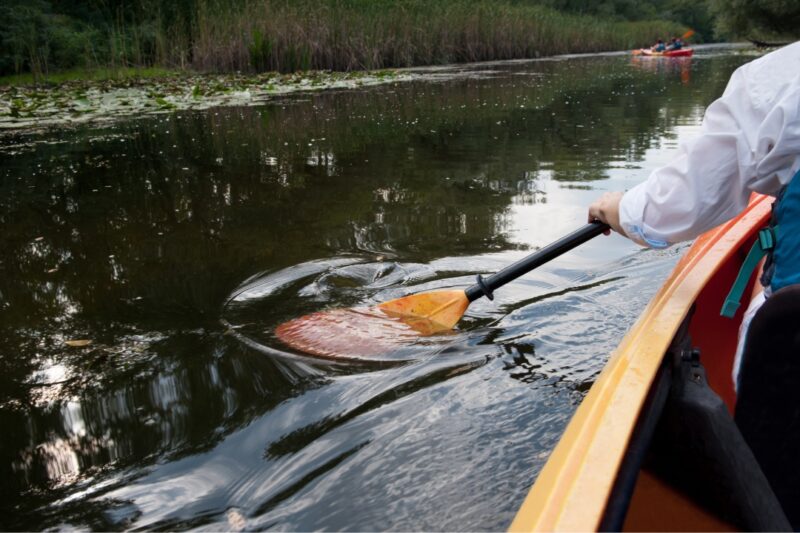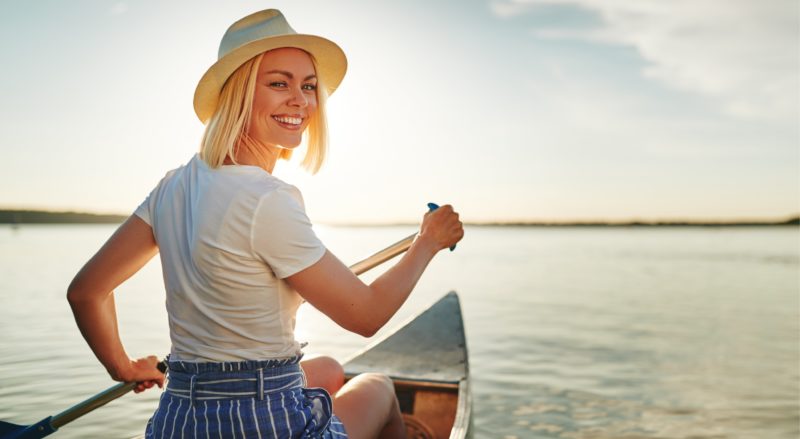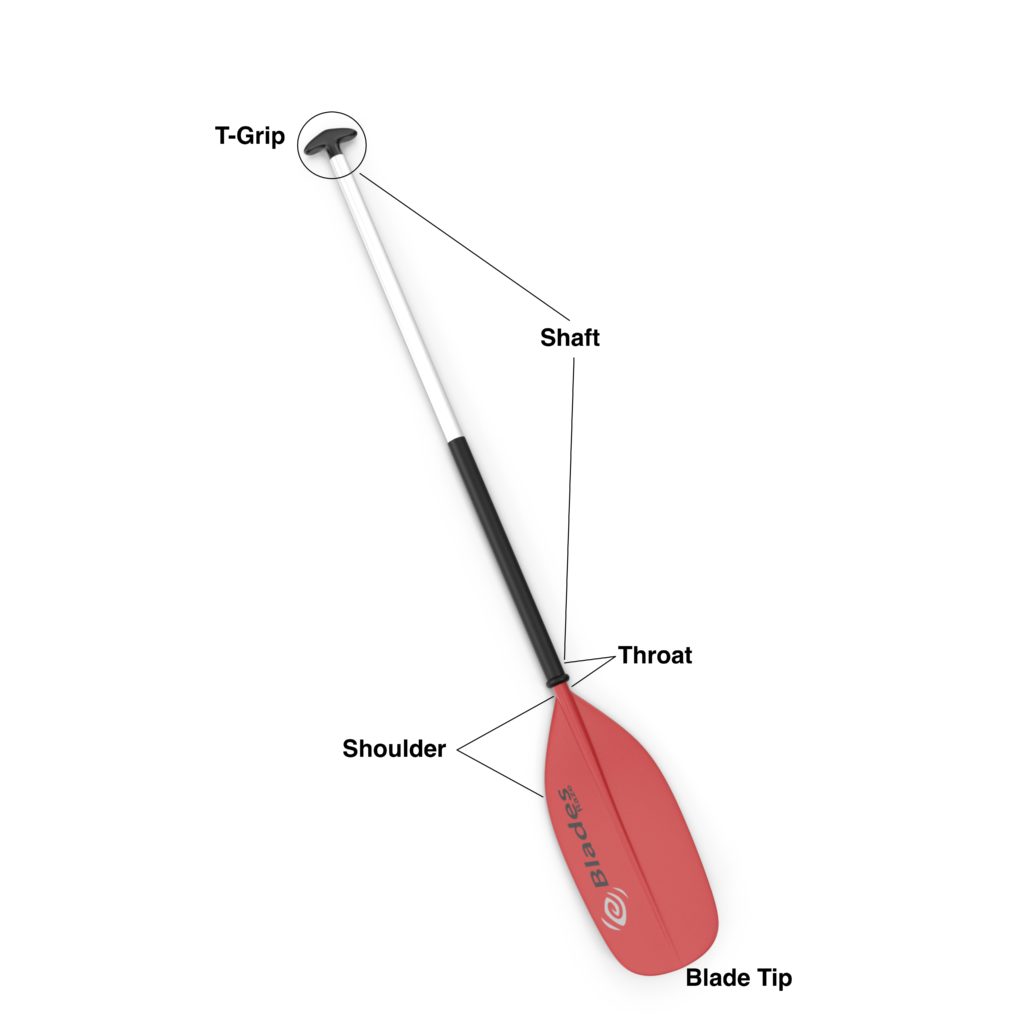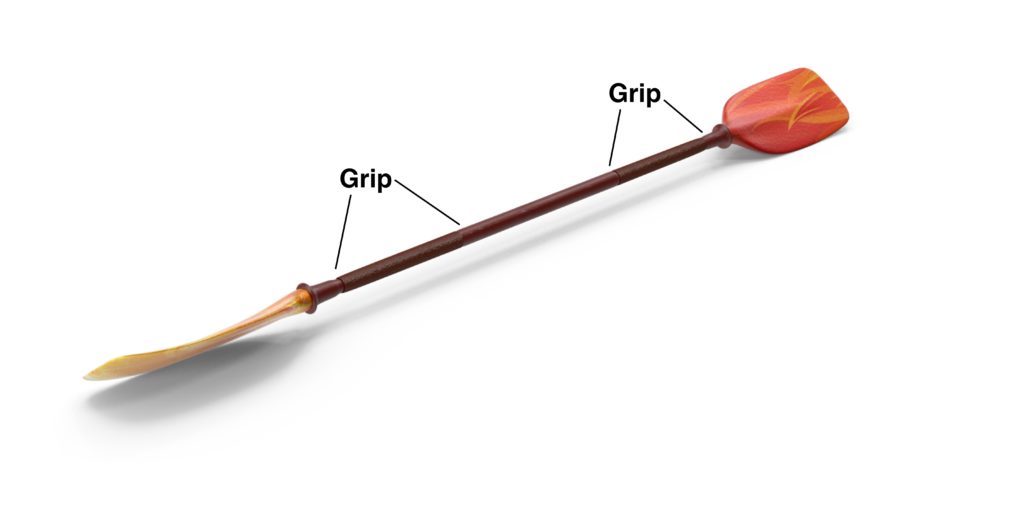The right equipment makes all the difference in enjoying a day on the river. One crucial distinction is between paddles and oars. You might wonder if there is any difference.
Surprisingly, each has a unique function that can significantly impact water experiences. Today’s blog will explore the differences between paddles and oars, helping you understand when and where these tools are most efficient and effective.
What Are Paddles and Oars?
First, it’s essential to understand what paddles and oars are and how they function.
Paddles are handheld tools used to propel a river raft, canoe, or kayak. With only one blade, paddlers typically sit facing forward toward the bow with the stern to their backs.
On the other hand, oars are long, lever-like tools fixed to boat sides with oarlocks. Rowers use oars by pulling them through the water while sitting with their backs to the bow, facing the stern. That allows for significant propulsion and control.
Pros and Cons of River Paddles
Paddles offer several advantages, particularly for river rafters, kayakers, or canoeists. They are lightweight, easy to manipulate quickly and provide a more intimate connection with the water.
In addition, paddles require more physical effort to maintain watercraft speed, control, and maneuverability. Their single-blade design can make them less efficient for long-distance travel, like crossing large bodies of water.
Pros
- Lightweight and easy to handle
- Ideal for narrow or shallow waters
- Provides a close connection to the water
Cons
- More physically demanding
- Less efficient for long distances
- Limited control in rough waters
Pros and Cons of Boat Oars
Oars used to row dinghies, skiffs, or dories are set into a fixed position on rowboats. There are two basic shapes for oars: flat blades and spoon blades. The hull shape determines the oar blade shape. For example, the rounded hull of a canoe would perform best using a spoon blade, while a flat blade would be for a flat bottom dory boat.
Oars are the tool of choice for making powerful strokes that propel the watercraft in a straight line, especially over long distances. Additionally, oars are more stable in rough or turbulent waters. However, they are bulkier and require more setup and space, which can be limiting in smaller boats or on quick trips.
Pros
- Powerful and efficient
- Better control in rough waters
- Suitable for long-distance travel
Cons
- Bulky, long, and heavy
- Requires more setup
- Less maneuverable in tight spaces
Choosing the Right Tool for Your Water Adventure
Selecting between paddles and oars depends mainly on the type of watercraft you plan to use and the nature of your adventure. A paddle is ideal for navigating narrow rivers or leisure float trips downriver.
On the other hand, if you aim to cover more substantial distances or navigate larger, open waters, oars offer the efficiency and control you need. Common considerations are:
- Type of watercraft
- Body of water (river, lake, lagoon, canal, channel, sea, ocean, fjord)
- Water terrain (narrow or wide, shallow, open, rough, water flow)
- Distance and duration of the water adventure
Rafting Paddles are for Rivers
Ultimately, choosing paddles or oars depends on your specific needs and the nature of your water adventure. Both tools have unique advantages and can offer a fantastic way to enjoy water activities.
By understanding these differences, you should better understand why your rivercraft at Lazy Days Resort gets equipped with a paddle instead of an oar. Book your next river experience and cabin stay at Lazy Days Resort!
